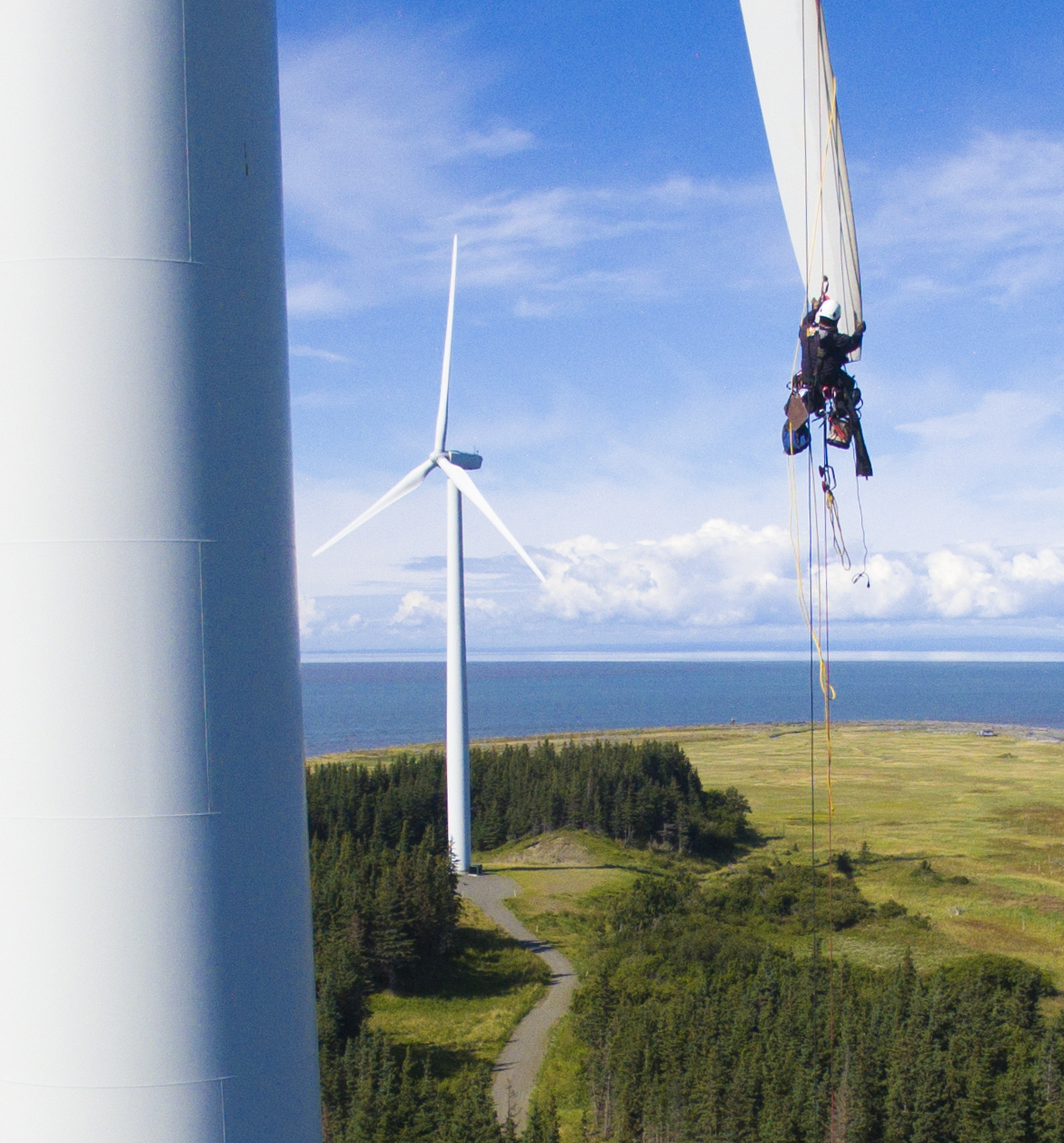
Photo by Jason Moore.
Eleven turbines. Seven thousand homes powered. Each year, 300 million cubic feet of natural gas (equivalent to 146.5 million kilowatt hours) saved. For five years, the Fire Island Wind Project has powered Anchorage. “We’ve had a good run,” said CIRI’s Suzanne Settle, senior director, Energy Development. “As the region’s first major independent power producer, we’re just coming off our best year ever.”
Fire Island Wind LLC, a CIRI company, owns and operates the 17.6-megawatt Fire Island Wind Project, located three miles off the coast of Anchorage. Seventy-five percent (3,200 acres) of the land on Fire Island is owned by CIRI, and the company is in the process of obtaining the remaining 25 percent. The project began delivering clean, renewable energy to Anchorage homes and beyond in the fall of 2012.
The location of Fire Island presents certain challenges. The 5.5-mile-long island is uninhabited and completely separated from Anchorage. But the team tasked with the operation and maintenance knows the island well; they frequently fly to its small airstrip to carry out regular maintenance and upkeep, including oil changes, snow removal and monitoring the turbines for damage.
During an aerial survey of the turbine blades in the spring, the team realized that wind had eroded some of the blade tips. Chris Jimenez, operations manager for the Fire Island Wind Project, orchestrated transporting contractors to the island to carry out the repairs. Crews began by climbing 260 feet to the nacelle, the housing at the center of the blades, then rappelling 130 feet down on ropes to the blade tips. There, they chipped away the damage and applied new epoxy material to preserve the integrity of the blades.
“It’s a preventative measure to stop the damage from getting any worse, and it’s done in a way that minimizes the amount of downtime for the operation,” Jimenez said.
2016 marked a year of record-high energy output for the project – 55,580 megawatt hours (MWh), up from 50,170 in 2015 and 47,470 in 2014. Energy production was 8.6 percent above budget, while operating expenses were 5.3 percent below budget.
“September marks the five-year anniversary of the Fire Island Wind Project, and everything’s performing really well,” Settle said. “In addition to better-than-expected energy production, we saved money on operating costs since many of the items we had budgeted for didn’t require maintenance.”
Also in 2016, Fire Island Wind was lauded by General Electric Company as one of the top four wind energy projects in the country. The data looked at a project’s ability to produce energy, given appropriate wind conditions. Fire Island Wind showed consistently high availability, averaging 98.6 percent availability over the calendar year—an impressive percentage by industry standards.
“Developing and operating the Fire Island Wind Project for CIRI has led to many energy-related business opportunities,” Settle said. “We became involved in at least eight other investments after we constructed Fire Island, and we continue to look for ways to expand our energy portfolio.”
For information on the Fire Island Wind Project, visit www.fireislandwind.com.



